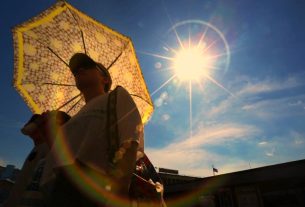Sun 24 March 2024:
A new study has shown that the human visual system can ‘trick’ the brain into making inaccurate assumptions about the size of objects in the world around them.
The research findings could have implications for many aspects of everyday life, such as driving, how eye witness accounts are treated in the criminal justice system, and security issues, such as drone sightings.
The research team from the University of York and Aston University presented participants with photographs of full-scale railway scenes, which had the upper and lower parts of the image blurred, as well photographs of small-scale models of railways that were not blurred.

Real v model
Participants were asked to compare each image and decide which was the ‘real’ full-scale railway scene. The results were that participants perceived that the blurred real trains were smaller than the models.
Dr Daniel Baker, from the University of York’s Department of Psychology, said: “In order for us to determine the real size of objects that we see around us, our visual system needs to estimate the distance to the object.
“To arrive at an understanding of absolute size it can take into account the parts of the image that are blurred out – a bit like the out-of-focus areas that a camera produces – which involves a bit of complicated mathematics to give the brain the knowledge of spatial scale.
“This new study, however, shows that we can be fooled in our estimates of object size. Photographers take advantage of this using a technique called ‘tilt-shift miniaturisation’, that can make life-size objects appear to be scale models.”
Flexible system
The findings demonstrate that the human visual system is highly flexible – sometimes capable of accurate perception of size by exploiting what is known as ‘defocus blur’, but at other times subject to other influences and failing to make sense of real-world object size.
Professor Tim Meese, from Aston University, said: “Our results indicate that human vision can exploit defocus blur to infer perceptual scale but that it does this crudely.
“Overall, our findings provide new insights into the computational mechanisms used by the human brain in perceptual judgments about the relation between ourselves and the external world.”
SOURCE: INDEPENDENT PRESS AND NEWS AGENCIES
______________________________________________________________
FOLLOW INDEPENDENT PRESS:
WhatsApp CHANNEL
https://whatsapp.com/channel/0029VaAtNxX8fewmiFmN7N22
![]()
TWITTER (CLICK HERE)
https://twitter.com/IpIndependent
FACEBOOK (CLICK HERE)
https://web.facebook.com/ipindependent
YOUTUBE (CLICK HERE)
https://www.youtube.com/@ipindependent
Think your friends would be interested? Share this story!





